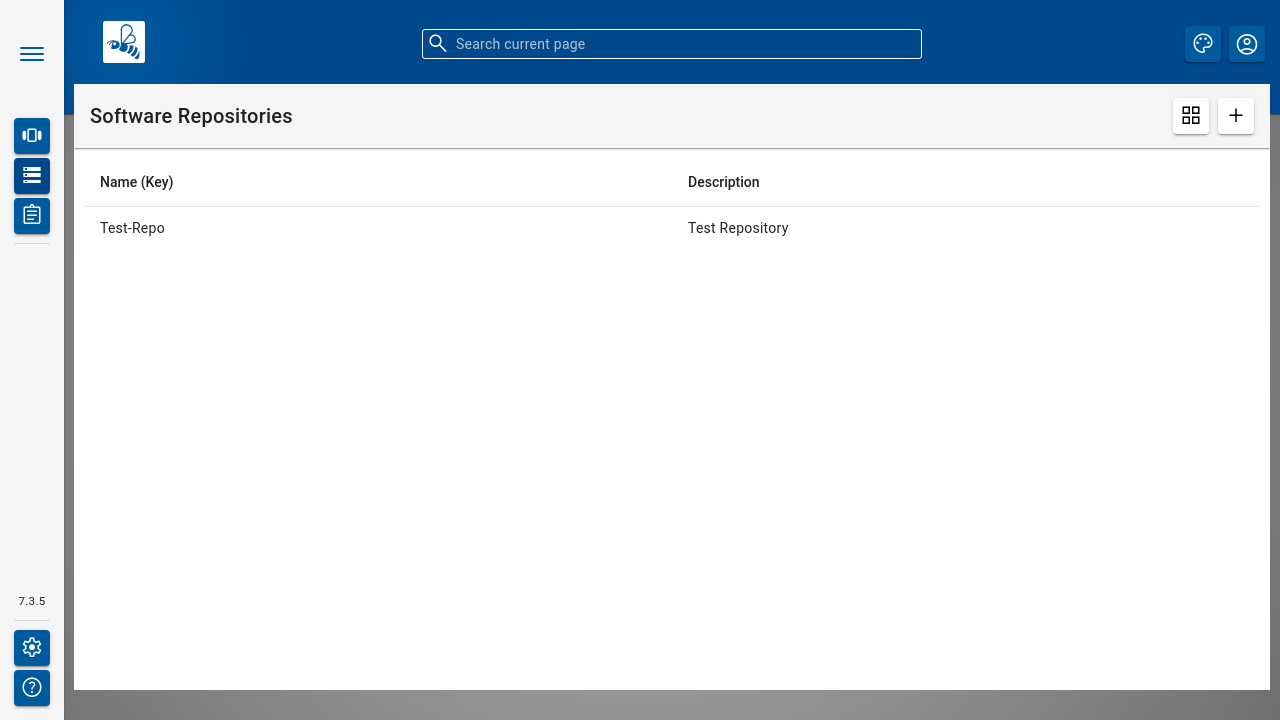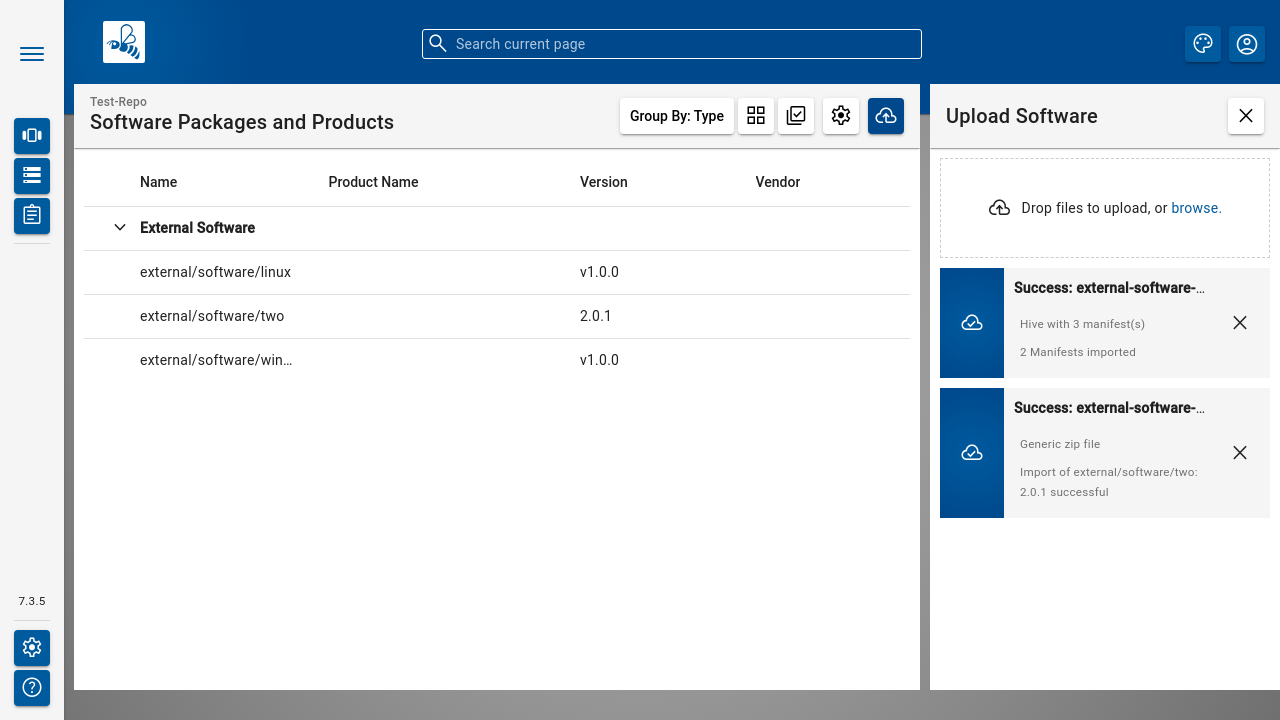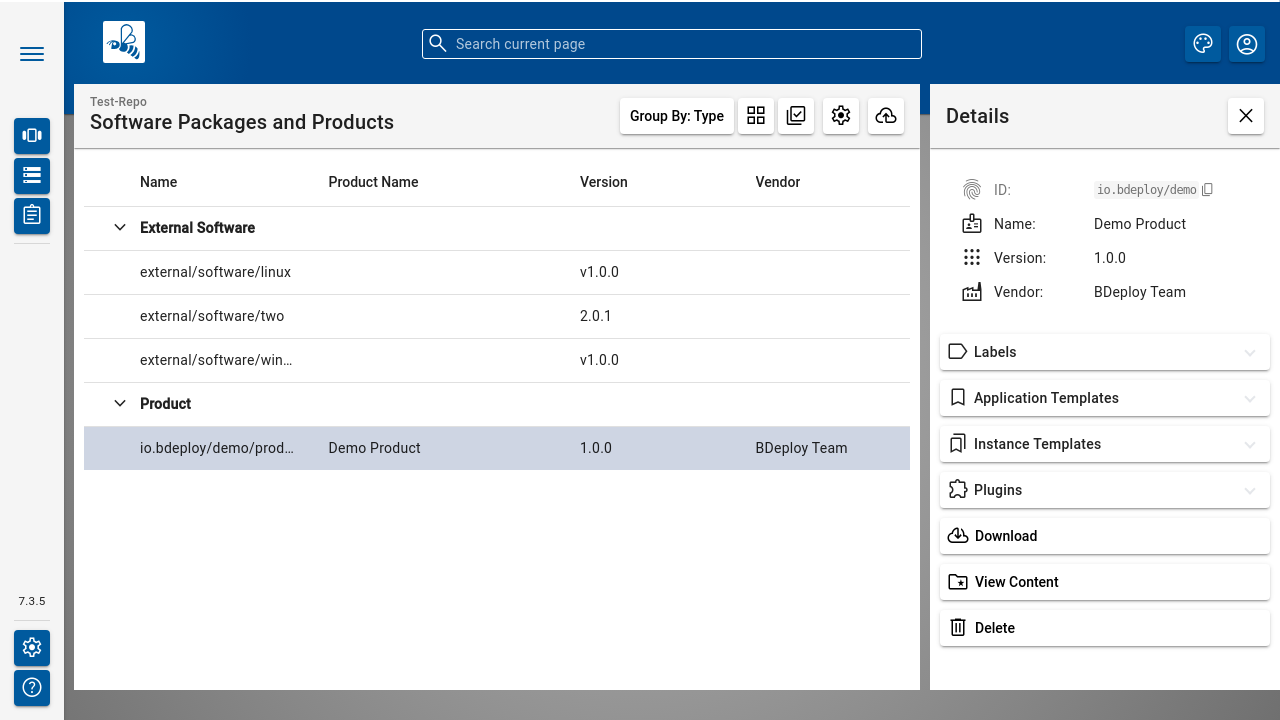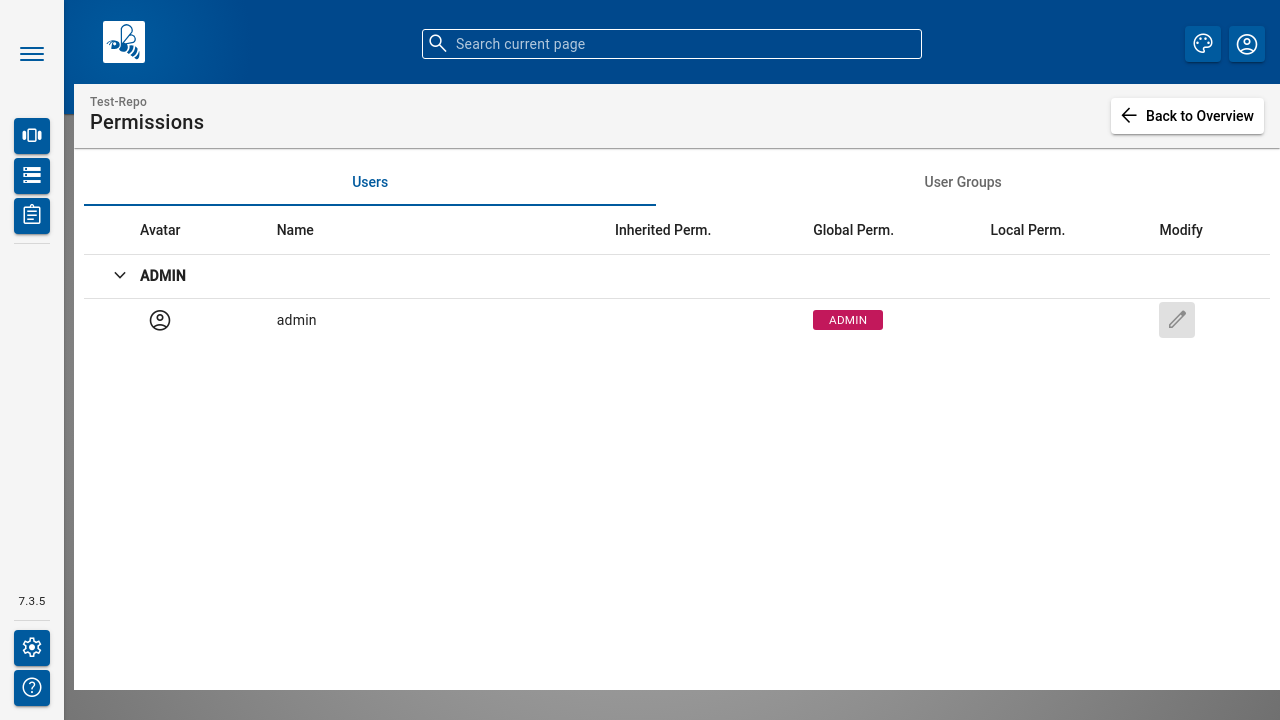#
Runtime Dependencies
As previously described in app-info.yaml, Applications can declare dependencies to third-party Manifests. These Manifests are hosted in Software Repositories on the BDeploy Server.
To make these Manifests available on the server, you need to:
- Use
bhive importto import the directory containing the third-party software into a local BHive. - Use
bhive pushto push the created Manifest to the Software Repository of your choice.
Alternatively, the Web UI provides a mechanism to upload arbitrary software to Software Repositories.
#
Manifest Naming
Third party software Manifests can have basically any name. However, if you want to provide different Manifests per target operating system, you will have to follow a simple naming rule: append the operating system name to the Manifest name part, e.g.:
my/external/software/windows:1.0.0my/external/software/linux:1.0.0
It can then be referenced by an app-info.yaml using the short-hand syntax my/external/software:1.0.0 and BDeploy will choose the correct one depending on the target operating system.
#
Runtime Dependency Packaging
BDeploy will always make sure that your products are self contained. This means that
Note
Included runtime dependencies will not show up on the target server's Web UI anywhere. There is no
#
Software Repositories
Software Repositories are a storage location for any external software required by products. In addition, BDeploy products can be stored and managed in Software Repositories, from where they can be transferred (imported) to Instance Groups. A Software Repository shares its namespace with Instance Groups, which means that the unique name of a Software Repository must not collide with any name of a Software Repository or Instance Group.

#
Upload Software
To upload external software, open a software repository and click on the [ Upload Software ] button in the toolbar. Then click on browse or drop files. You can upload zip packages.
After uploading arbitrary content, you need to specify the name of the software, the version and the supported operating systems. If you already have a package in a BHive format or a package including a product descriptor containing all of this metadata, the available information will be used automatically.

After all requested information is entered, click Import to import the files to the Software Repository.

If the upload was successful, the software for each operating system will show up.
The available software packages and products can be viewed and downloaded if required.

#
Software Repositories Access
Software Repositories are created and managed by global administrators. A Software Repository needs READ permission to be visible and readable. WRITE permissions are required to manage the software packages in the repository. Therefore, to upload software, a user requires ADMIN or WRITE permissions either globally or assigned in the Software Repository Permissions panel.

The Software Repository Permissions panel works similarly to the Instance Group Permissions.
Note
You can make Software Repository public by assigning local READ permission to All Users Group.

